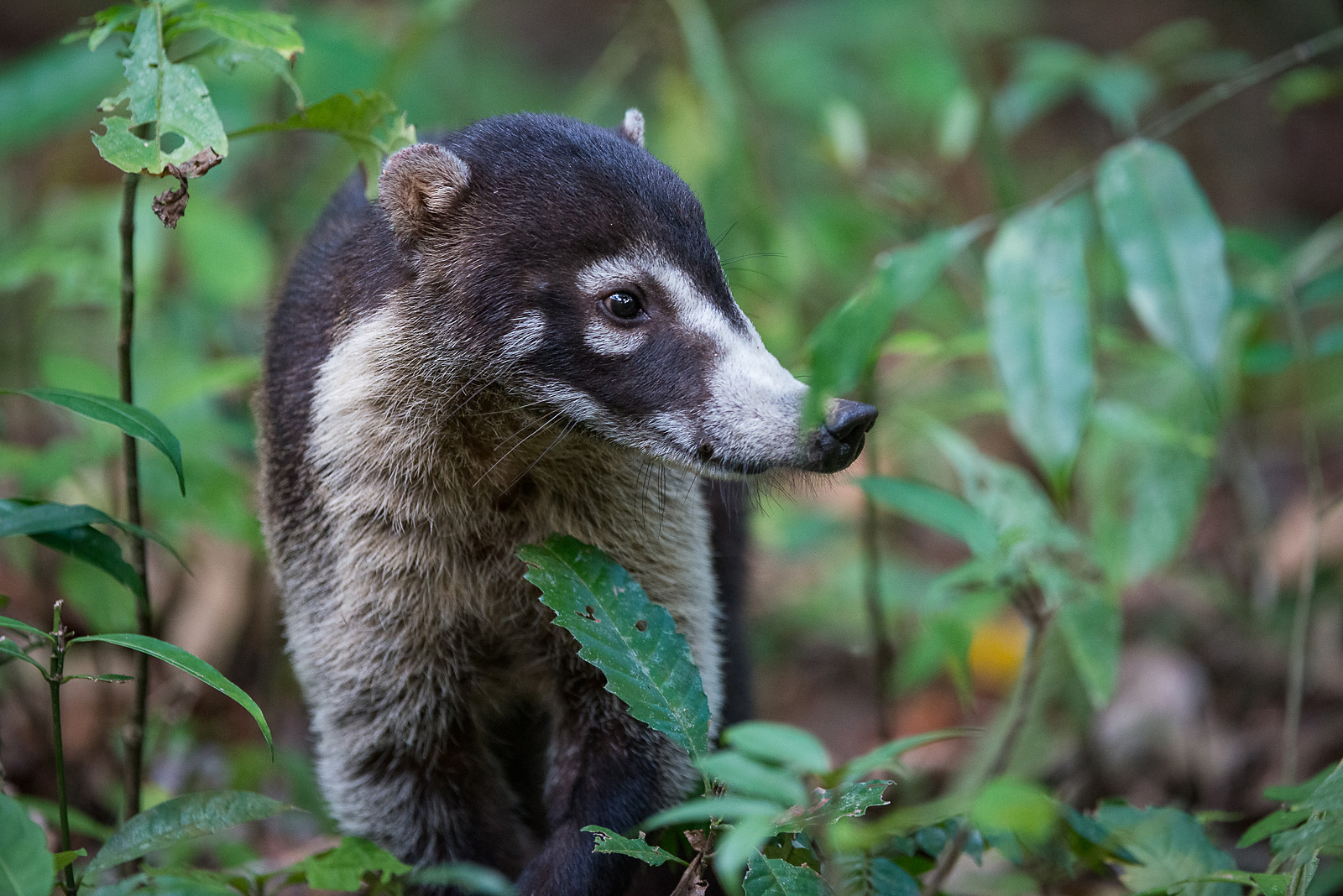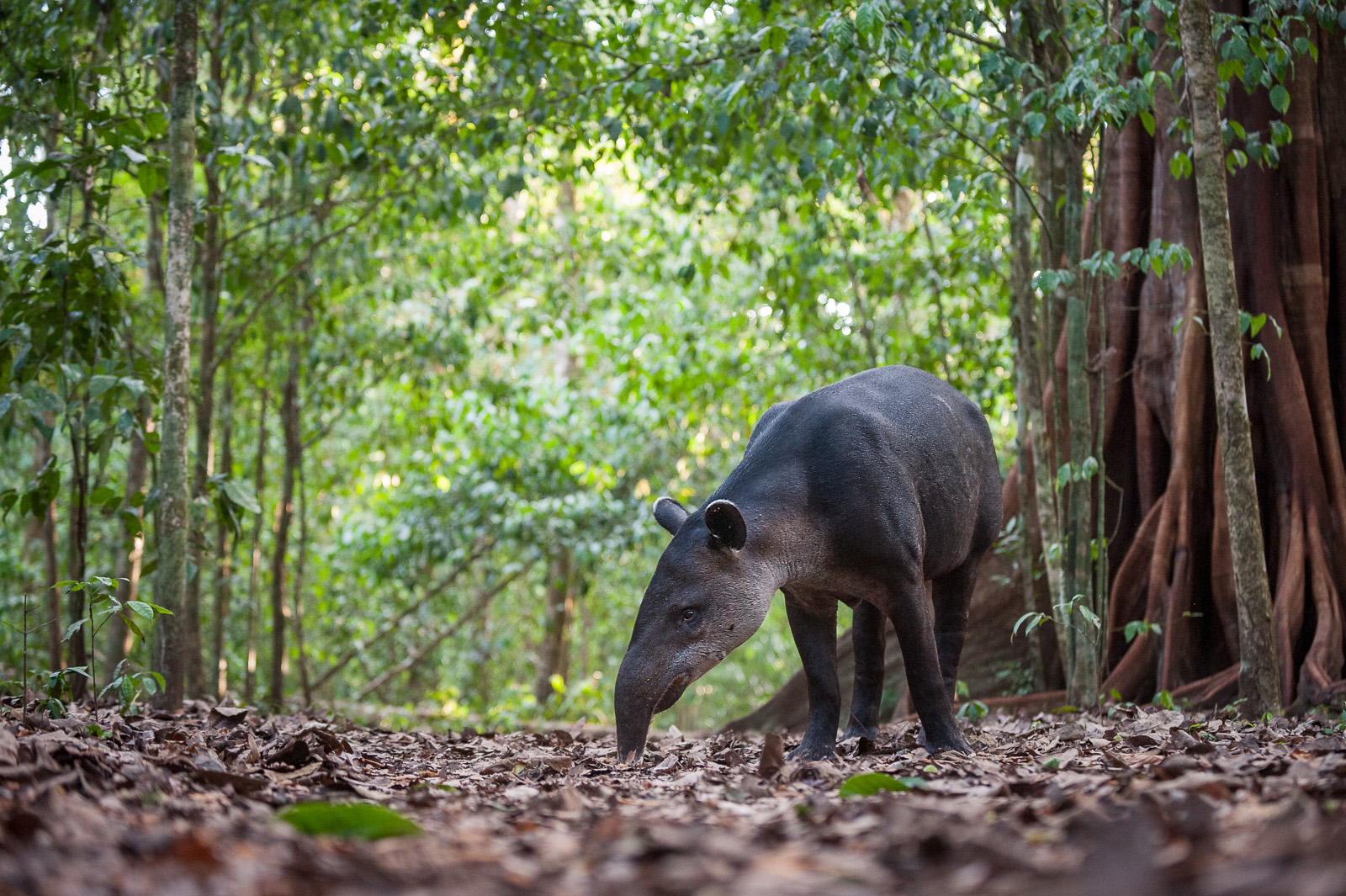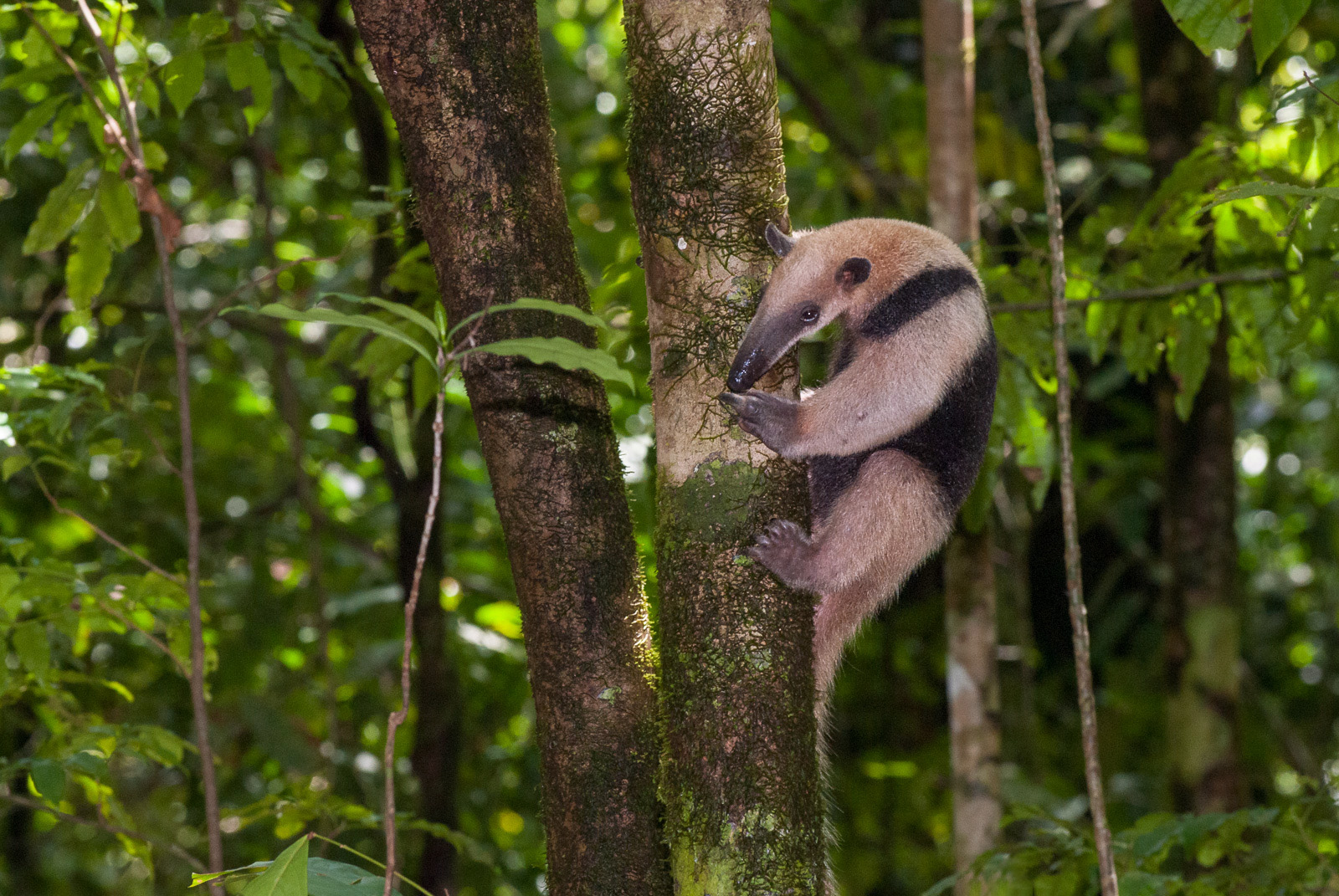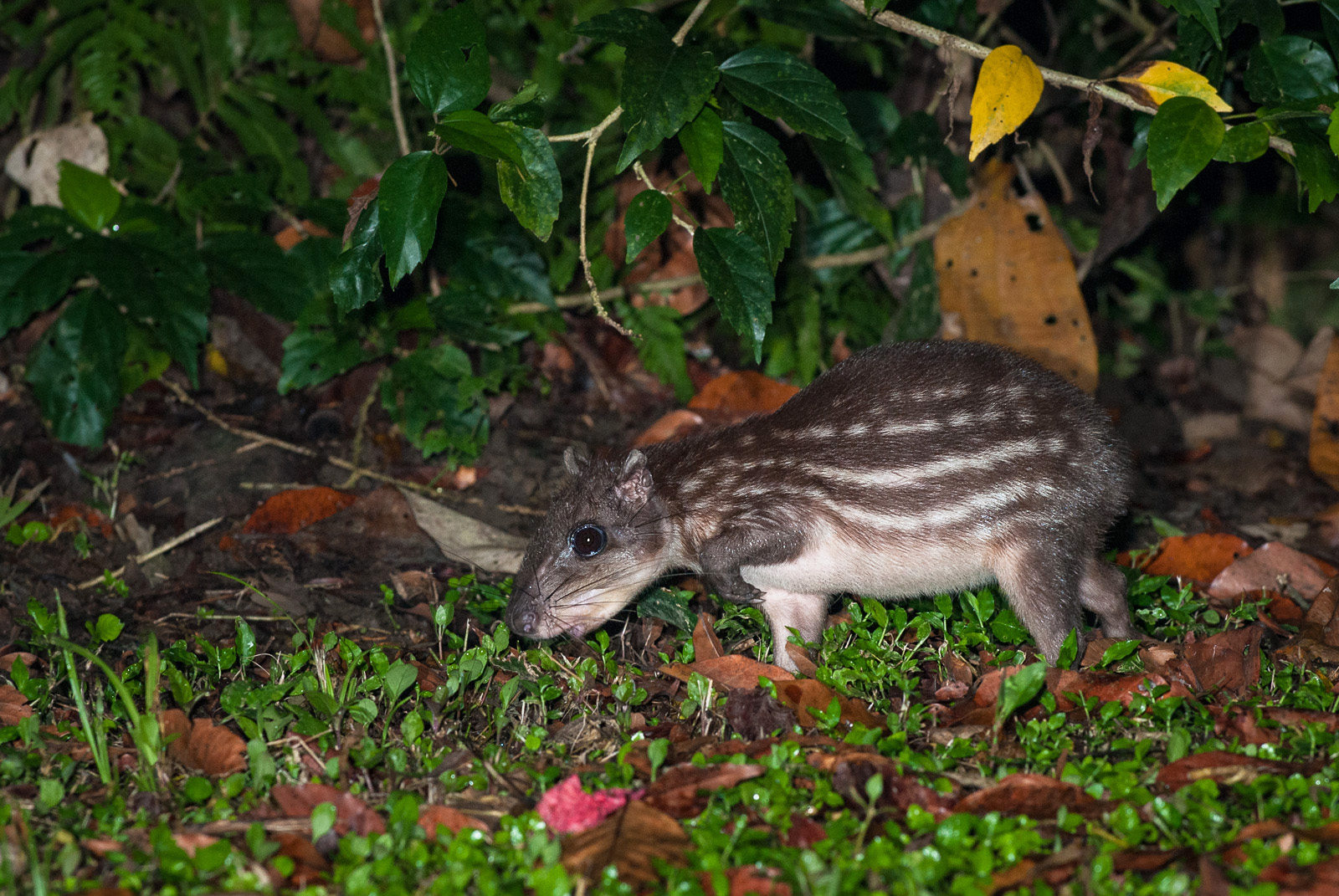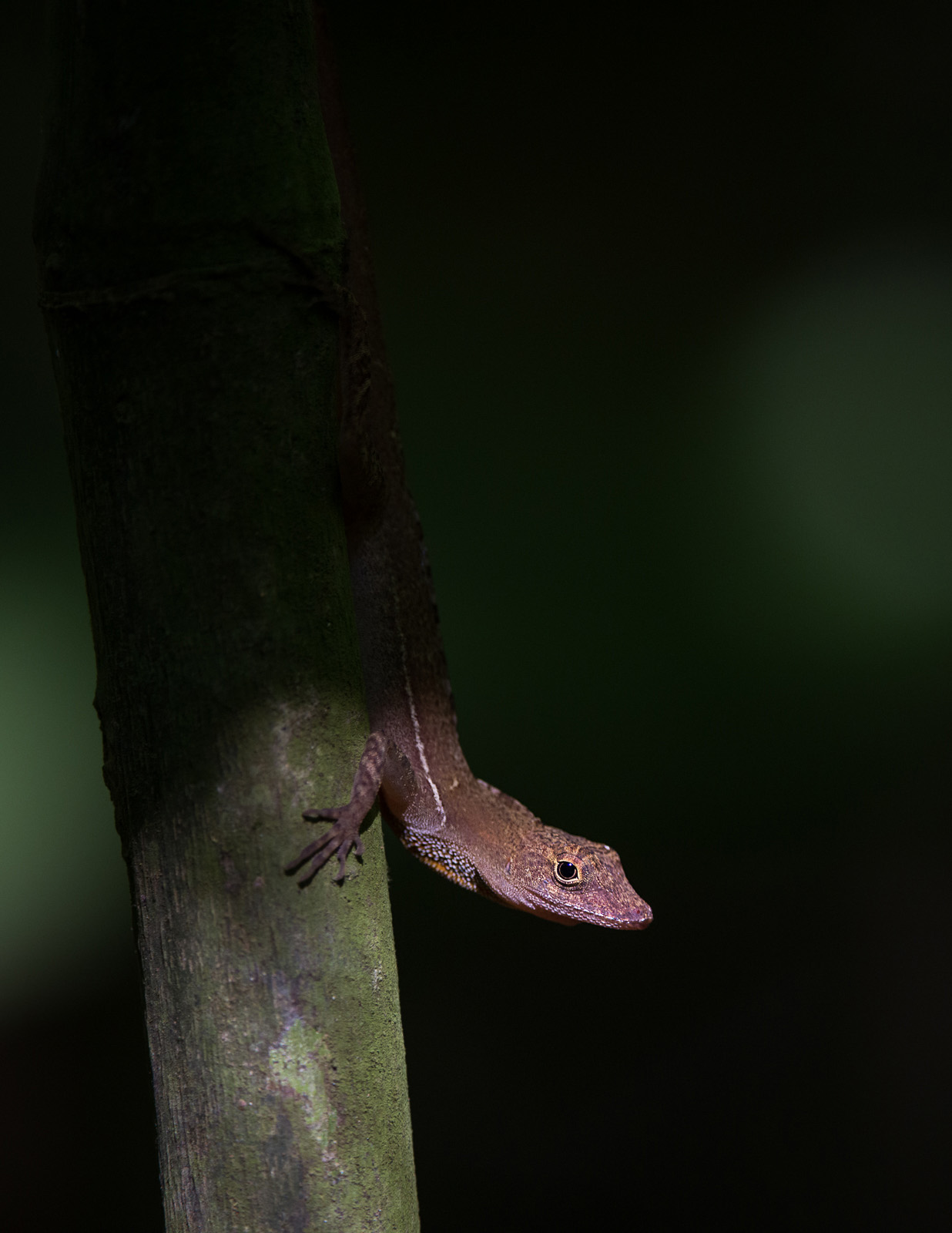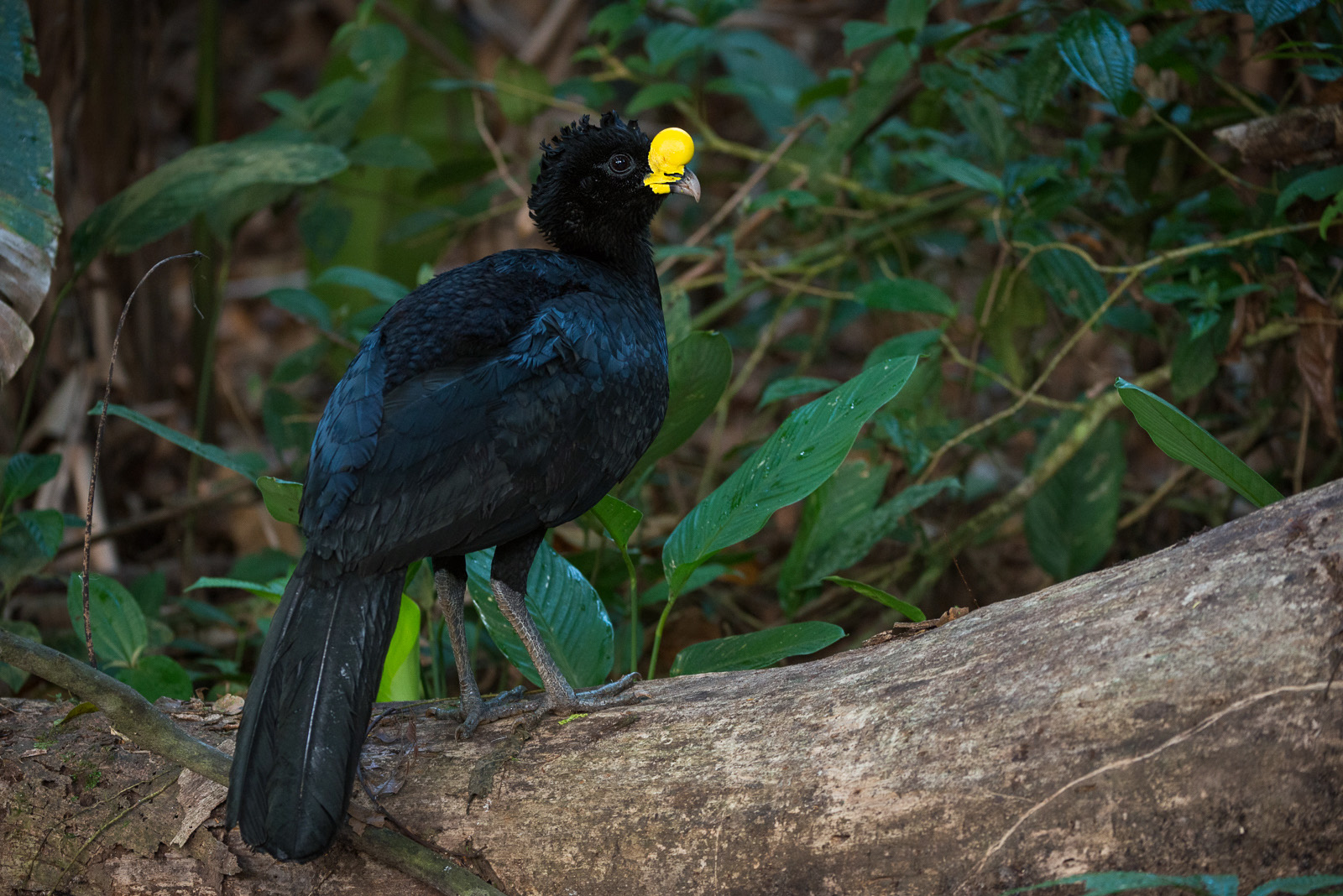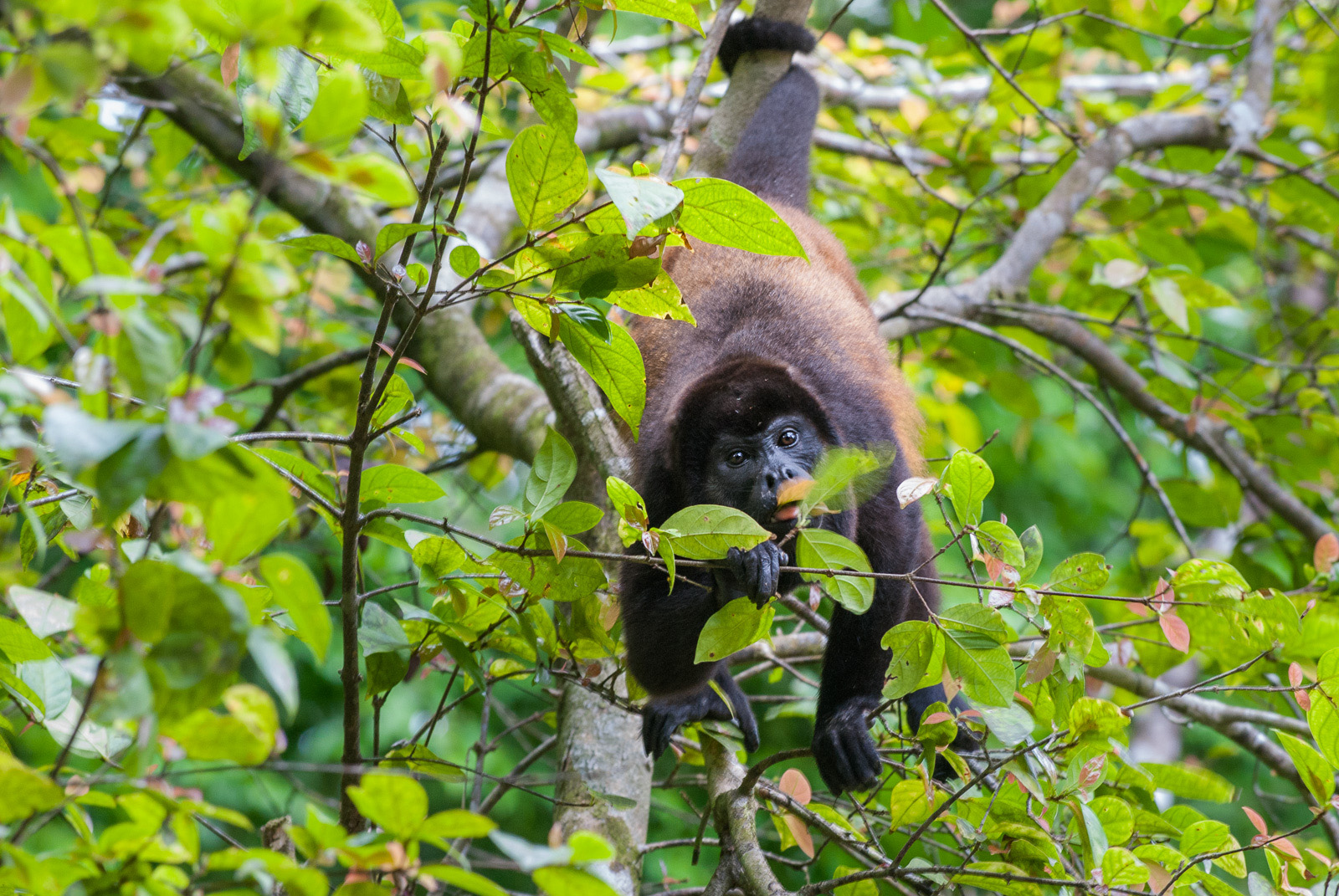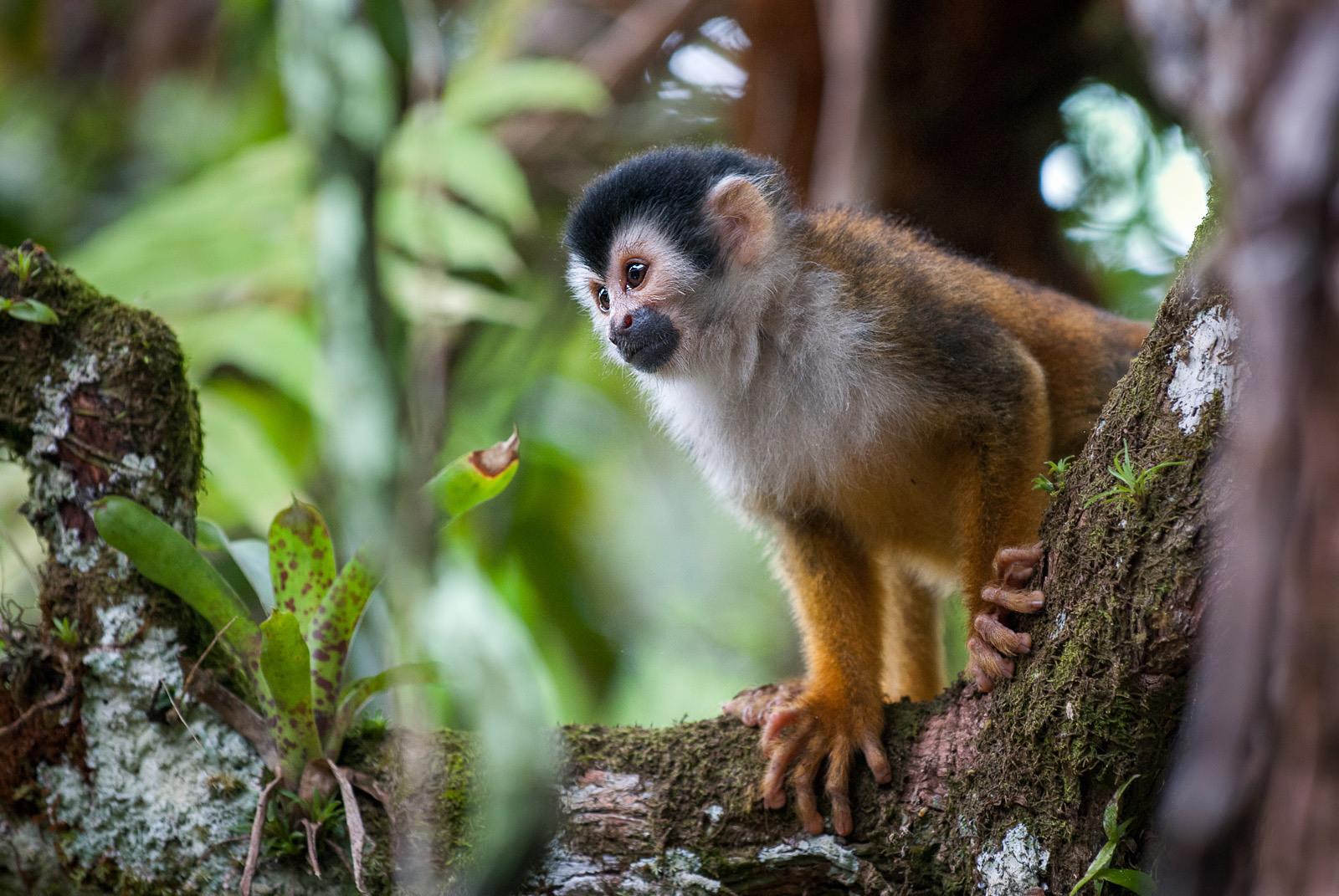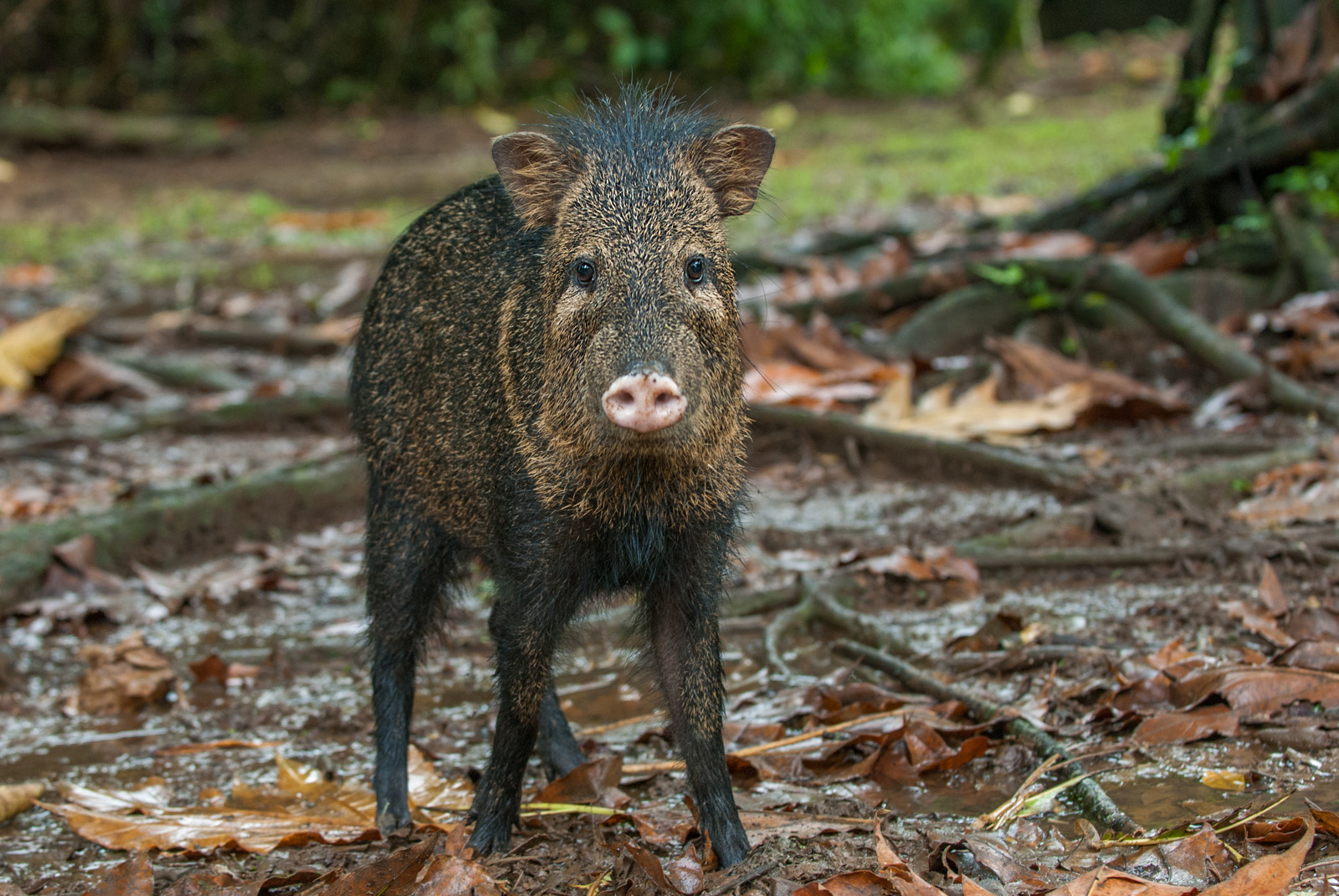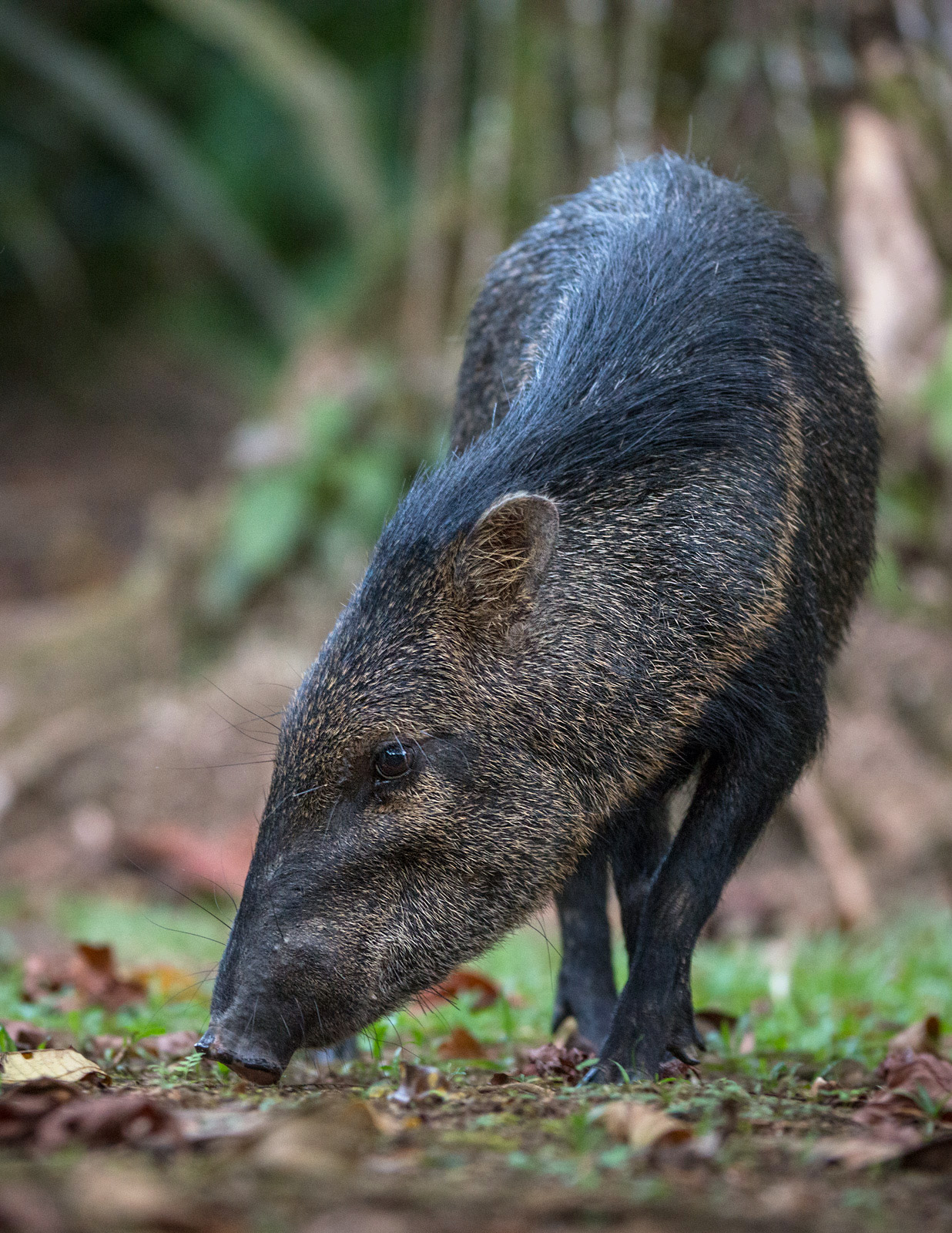Baird’s Tapir
The Baird’s tapir is the largest land mammal in Central America. They are classified as endangered and vulnerable to extinction due to habitat loss and poaching. The death of even a single tapir is significant because they reproduce so slowly. The gestation period for a female is more than 400 days, after which a single baby is born. Multiple births are extremely rare. This large male tapir was foraging on the forest floor in Corcovado National Park in Costa Rica. Nikon D700 with Nikkor 70-200mm lens (at 70mm) ISO 3200, f/2.8 at 1/100th of a second.
Northern Tamandua
There are two types of tamandua in the world, the northern and the southern. The one that occurs in Central America is the northern. They aren’t exactly common, but I have had the pleasure of meeting about five or six of them over the years. This guy was my first encounter. Corcovado National Park in southern Costa Rica. Nikon D200 with Nikkor 70-200mm lens (at 200mm) ISO 400, f/8 at 1/60th of a second. Nikon SB-800 flash.
Paca
Here’s another interesting rodent — this time from Costa Rica. The paca, otherwise known as the gibnut or royal rat. Not nearly as big as the capybara I posted yesterday, but still a good size for a rodent. This one was spotted while walking back to my lodge after dinner at Tiskita in the town of Pavones. Nikon D200 with Nikkor 70-200mm (at 200mm) ISO 400, f/5.6 at 1/60th of a second, two Nikon SB-600 flash units.
Many Scaled Anole
There are estimated to be about 425 species of lizard in the genus anolis — all distributed throughout the Americas, mostly in Central and South America. Although — as is often the case when it comes to species classification — there is some debate that many of them should be split into different genera, thus leaving about 45 true anolis species. Sometimes they get more than one name too. This one is the many scaled anole, but also goes by the Golfo-Dulce anole, native to the Golf of Dulce in southwestern Costa Rica. All very confusing. I just liked the way it popped its head into the spot of light. Nikon D810 with Nikkor 200-400mm lens (at 400mm) ISO 1600, f/4 at 1/320th of a second.
Great Curassow (Aka Jungle Turkey)
 Happy Thanksgiving everyone (a day early as I’ll be taking a quick break until Monday). This is a great curassow, or as they are locally known in Costa Rica — a jungle turkey. Photographed not far from Costa Rica’s capital of San José, at La Selva Biological Reserve. This is the male of the species. The females are more reddish in color and lack the yellow knob on the beak. They make up for it, however, with a much more ornamental crest.
Happy Thanksgiving everyone (a day early as I’ll be taking a quick break until Monday). This is a great curassow, or as they are locally known in Costa Rica — a jungle turkey. Photographed not far from Costa Rica’s capital of San José, at La Selva Biological Reserve. This is the male of the species. The females are more reddish in color and lack the yellow knob on the beak. They make up for it, however, with a much more ornamental crest.
Nikon D800 with Nikkor 200-400mm lens (at 200mm) ISO 1600, f/4 at 1/40th of a second
Howler Monkey
 There are four monkey species that live in Costa Rica — the squirrel (which I posted the other day), the white-faced capuchin, the spider and this guy, the howler. I didn’t see as many howlers as the other species on my first visit to the Osa Peninsula in the southern part of Costa Rica, but two rather bold howlers made a brief appearance before moving on deeper in the forest.
There are four monkey species that live in Costa Rica — the squirrel (which I posted the other day), the white-faced capuchin, the spider and this guy, the howler. I didn’t see as many howlers as the other species on my first visit to the Osa Peninsula in the southern part of Costa Rica, but two rather bold howlers made a brief appearance before moving on deeper in the forest.
Nikon D200 with Nikkor 70-200mm lens (at 200mm) ISO 500, f/5.6 at 1/15th of a second
Central American Squirrel Monkey
 These little squirrel monkeys paid a visit to our lodge one afternoon while at Tiskita in Pavones, Costa Rica. Unfortunately, their engaging nature and attractive appearance have made them the target of the illegal pet trade. The good news is that recent efforts at conservation have been responsible for elevating their status from Endangered to the less critical, Vulnerable. Here’s hoping the trend continues.
These little squirrel monkeys paid a visit to our lodge one afternoon while at Tiskita in Pavones, Costa Rica. Unfortunately, their engaging nature and attractive appearance have made them the target of the illegal pet trade. The good news is that recent efforts at conservation have been responsible for elevating their status from Endangered to the less critical, Vulnerable. Here’s hoping the trend continues.
Nikon D200 with Nikkor 70-200mm lens (at 180mm) ISO 400, f/4 at 1/160th of a second
Young Collared Peccary
 Here’s a species that I don’t post often but have photographed on numerous occasions. The collared peccary, one of three peccary species, ranges from the southern United States, down into South America. I photographed this one late one afternoon in La Selva, Costa Rica.
Here’s a species that I don’t post often but have photographed on numerous occasions. The collared peccary, one of three peccary species, ranges from the southern United States, down into South America. I photographed this one late one afternoon in La Selva, Costa Rica.
Nikon D800 with Nikkor 200-400mm lens (at 200mm) ISO 3200, f/4 at 1/100th of a second


